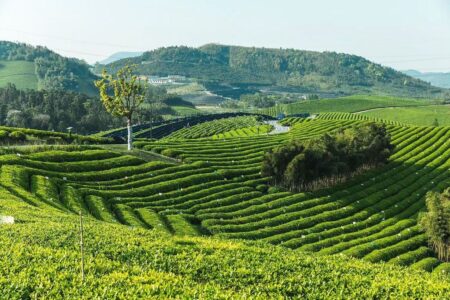ASEAN Coffee Consumption and Competitive Landscape

The Asia Pacific market is expected to continue to experience dramatic coffee growth in the coming years. However, local brands–and mixes–dominate, so international players looking to enter the ASEAN market must ensure their brands “feel local” and cater to local tastes.
By Vin Ne Foo
Asia Pacific is the third largest coffee market globally, after Western Europe and North America. Japan is the leading coffee market within Asia Pacific, accounting for 30 percent of the region’s coffee sales in 2016. With this market’s maturity, however, growth in the region is coming largely from ASEAN (Association of Southeast Asian Nations: Indonesia, Malaysia, Philippines, Singapore, Thailand and Vietnam) markets such as Indonesia and the Philippines.
International brand owners looking to expand their geographical reach to ASEAN markets will find consumers here vastly different from those in other markets. Growth in ASEAN’s coffee market is driven primarily by instant coffee mixes, which is true nowhere else in the world. Unlike its Western European and North American counterparts, where consumption is driven by high-value products, consumption in ASEAN is driven by affordable products. In 2016, each consumer in ASEAN spent an average of USD $4-16 (per day/month) on coffee, a fraction of the $42 (per month) and $38 spent by their counterparts in Western Europe and North America, respectively.
Despite the low consumer spend, brand owners would be wise not to dismiss the region. The ASEAN region is expected to see the most dramatic coffee growth anywhere in the world. Three of the top 10 growth markets in coffee globally are located here, namely Indonesia, the Philippines and Thailand. Those three combined will see an absolute growth of USD $2 billion during the forecast period, more than the projected growth in Western Europe and North America.
ASEAN Brands Dominate at Home
The growth of coffee in ASEAN has altered the competitive landscape in Asia Pacific. In ASEAN, where growth in coffee is heavily dependent on population growth and any accompanying rise in consumer spending, local companies with a strong understanding of local preferences are well positioned to convert population growth into sales. Local brands from Indonesia and the Philippines, in particular, have gained regional prominence primarily by increasing share in their domestic markets. Through penetrating traditional retail channels, which are dominant in their home markets, and engaging consumers through local marketing efforts, brands have successfully gained access to the market’s large population and its emerging middle class.
As a result, the competitive landscape in Asia Pacific today is vastly different from that of 2007. Back in 2007, only three Southeast Asian brands sat among the region’s top 10. In 2016, however, seven of the top 10 brands were from Indonesia and the Philippines.
Global Players Are More Vulnerable
With local companies like Kapal Api Group in Indonesia and JG Summit Holdings in the Philippines steadily climbing the ranks, global players like Nestlé SA and Jacobs Douwe Egberts (JDE) have found themselves to be much more vulnerable. Nestlé, for example, despite its broad portfolio in the instant coffee mixes category, holds a retail value share of only 7 percent in Indonesia. Indonesia is the second largest market in Asia Pacific and is poised to see the largest increase in retail value sales globally after Brazil, amounting to an increase in USD $1.1 billion from 2017-21, greater than the growth projected in North America and Western Europe. In 2016, Nestlé derived only four percent of its Asian Pacific retail value sales from Indonesia and, if the situation remains as it is, Nestlé will only be taking a fraction of the USD $1.1 billion, with remaining sales going to ASEAN players like Kapal Api Group and Mayora Indah Tbk Pt. JDE, the world’s second largest hot drinks company, will find penetrating the ASEAN market even more daunting.
In 2016, JDE was ranked ninth in Asia Pacific. The company’s strength, which has traditionally been in the fresh coffee category, where it ranks first globally, makes its portfolio ill-suited to capturing ASEAN consumers. However, in October 2016, JDE announced it was spending over USD $1 billion to acquire Singapore-based Super Group, a move which instantly boosts JDE’s retail value sales in Asia Pacific by more than 40 percent. Significantly, Super Group gets its sales mostly from Southeast Asia. Through this venture, JDE gains a foothold in the dynamic market and will be in a much better position to turn things around.
In the coming years, the competitive landscape in Asia Pacific will be shaped by strategic decisions made in the ASEAN region. Domestic and international players will compete to gain market share through increasing product reach and introducing new product varieties, be it new flavours or formats. Given that many local companies play heavily on the fact that they are producing their coffee locally, international players pursuing this strategy will have to take care to ensure that its brand feels like a local brand, by creating mixes that appeal to local tastes rather than simply adapting products that have been successful in other regions.
In addition, with the many instant coffee brands that are growing strongly and are not attached to international players, acquisition or strategic partnerships with local brands is always an option for international players looking to penetrate booming markets such as Indonesia, the Philippines and Vietnam. With the rapid rise of coffee consumption in ASEAN, coffee players will find increasing their presence here a promising route to long-term growth.
(Ms) Vin Ne Foo is a research analyst from the Drinks & Tobacco team at Euromonitor International. Her research covers Malaysia, Hong Kong and the Philippines. Her interests lie in analysing consumer behaviour and business strategies in the Southeast Asia markets. She has a bachelor degree in Chemical Engineering from the National University of Singapore.



